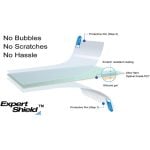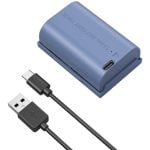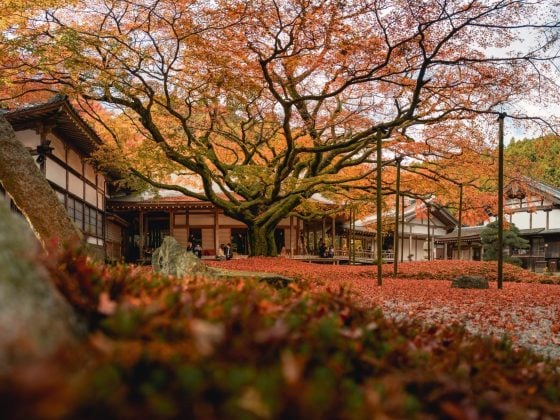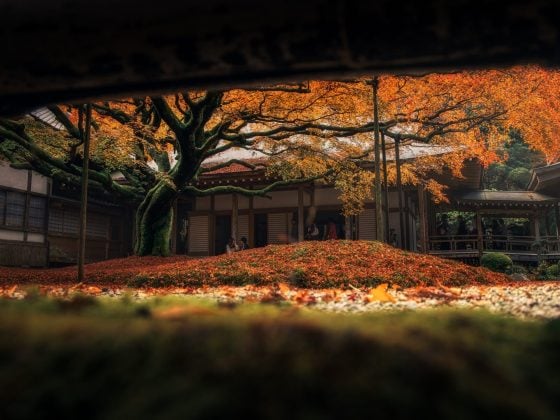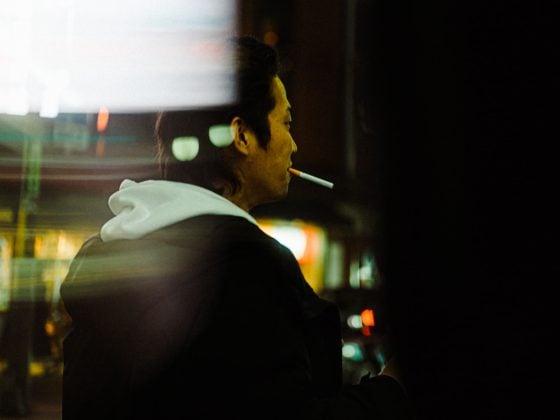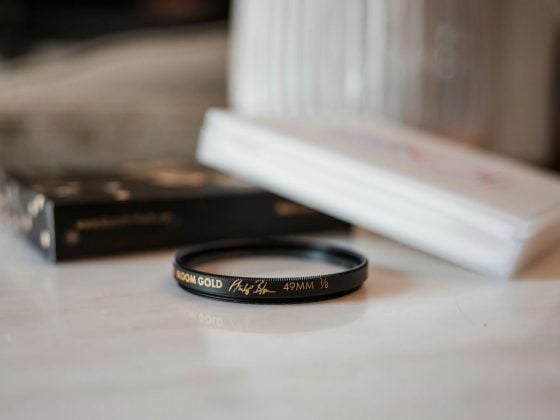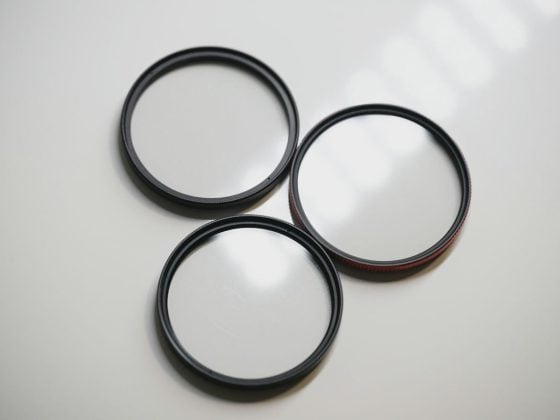A detailed list of all the best must-have accessories for the Canon EOS R.
The Canon EOS R is an incredible mirrorless camera that should end up being fairly customizable with third-party accessories once more are announced.
Use this list to find the best screen protectors, best batteries, straps, and cleaning gear for your Canon EOS R.
Table Of Contents
Best Accessories Canon R | Essentials
Best Screen Protectors Canon R
Canon puts pretty good screens in their cameras and they don’t scratch or get beat up as easily as the Sony screens. I never used screen protectors on my older Canon cameras and never had any issues. With the EOS R you can also fold back the LCD screen so that it is protected when the camera is not in use.
If you want to play it safe, these are the best screen protectors for the Canon EOS R.
Expert Shield Screen Protector
Crystal Clear: BHphoto
Anti-Glare: BHphoto
The Glass screen protector is the toughest protector Expert Shield offers. They also include a top display cover to protect the top screen from scratches or damage. The Expert Shield screen protectors for the Canon EOS R have a lifetime warranty and very friendly customer service. Sometimes the screen protectors get messed up when installing and you’ll need it replaced. Sometimes screen protectors also have flaws and need to be replaced. I’ve worked with Expert Shield a few times and they’ve always been very quick to help me with replacements and I highly recommend their products because of this customer service.
Best Batteries Canon EOS R
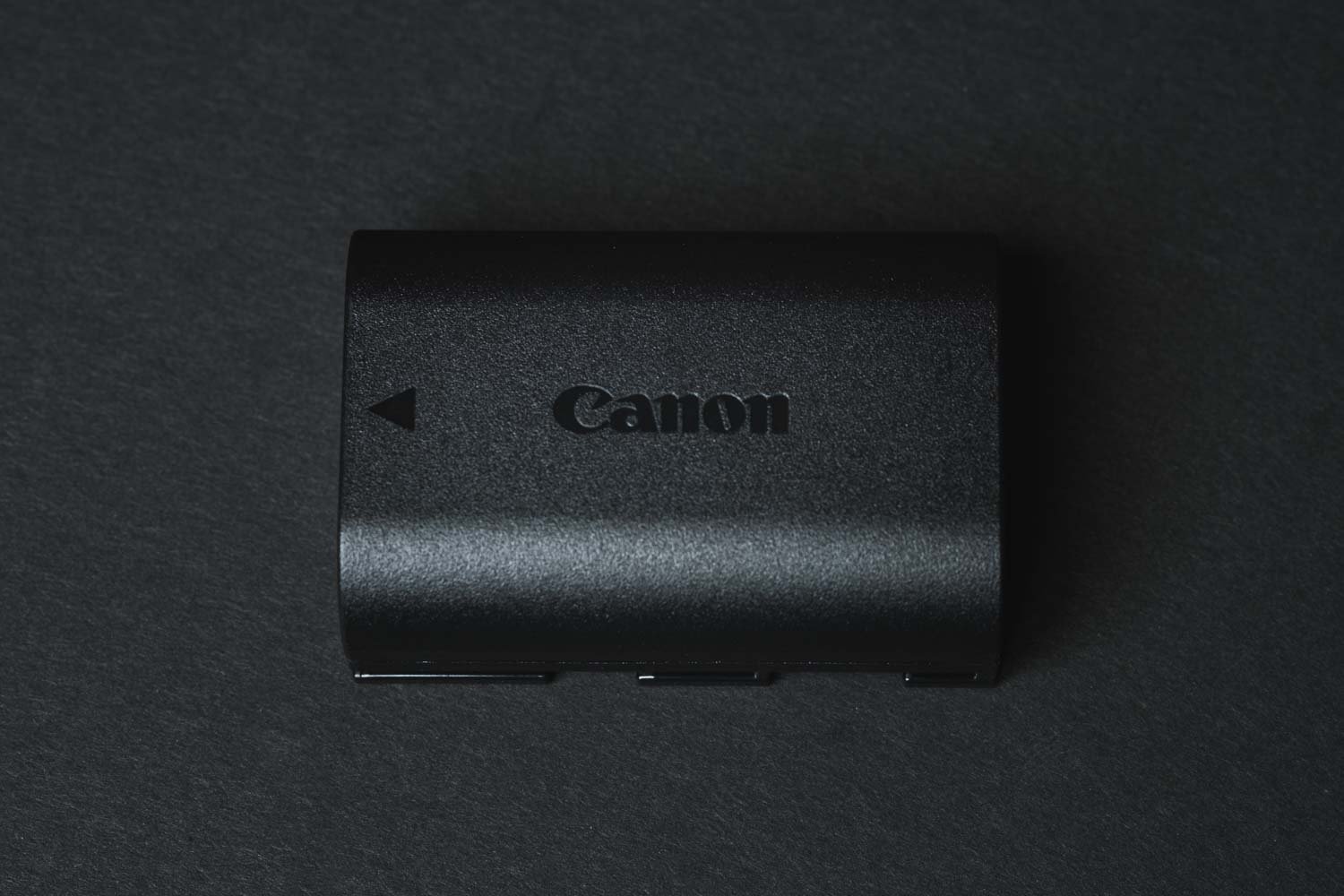
I think everyone is very happy that Canon didn’t change their battery here, which is already very good.
The Canon batteries last for a very long time in the EOS R. If you’re struggling with battery life, the camera has an ECO mode that will dim the LCD screen after a few seconds. You can also fold away the LCD screen so it’s not facing you and just use the EVF. Then the EVF turns off after a few seconds saving battery power.
When I’m using ECO mode and consciously make an effort to turn off the camera after each shot or use, I can get over 1,000 pictures without even getting to 25% battery power on the official Canon battery. If I don’t put the camera in Eco mode and just let it go to sleep while not powering it off after each shot, I’ll be able to shoot about 1,000 – 1,200 shots per battery.
The batteries do take a long time to charge with the Canon charger so might want at least two batteries total if you’re a casual photographer so you always have one on hand in case you forget to charge yours overnight. For video, you might want three.
Canon LP-E6NH Lithium Battery
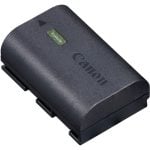 Available at: Amazon / Bhphoto
Available at: Amazon / Bhphoto
The official Canon LP-E6NH is the latest battery and is the same battery that works for most of the new Canon EOS DSLRs and Mirrorless cameras. These are the best batteries for the EOS R and my LP-E6 batteries from 10 years ago are still working today. There is a difference between LP-E6NH batteries and the older LP-E6. For the EOS R, you will need the LP-E6N as a minimum which was released back with the Canon 7DII. If you only need one backup, you probably want to save yourself the trouble and just go with a Canon official battery. If you need several for video, then you might want to buy some third-party batteries as well.
SmallRig LP-E6NH Batteries
SmallRig has batteries that can fast charge directly with a USB-C connection. This means if you charge a battery in your camera, and carry a few extra cables and small wall adapters, you don’t need to carry around bulky battery chargers.
2400mAh Capacity
Battery Charger Canon LC-E6
 Available at: Amazon / Adorama / Bhphoto
Available at: Amazon / Adorama / Bhphoto
The EOS R comes with a battery charger and you’ll likely not need an extra unless you need to charge more than one battery at a time.
I do recommend charging your batteries with OEM chargers if you can. I’ve had a lot of issues with third-party battery chargers in the past. I think that’s why so many people have issues with third-party batteries. Even if you decide to buy Wasabi or RavPower LP-E6N batteries, I still recommend charging them mostly in the Canon chargers. Although a charge here and there in the third-party chargers won’t hurt.
USB Power Adapter Canon PD-E1
Available at: Adorama / BHphoto
The Canon USB-C charger is a little expensive considering the EOS R is sort of entry-level full-frame camera. However, you can charge the camera with a Macbook Pro USB-C type charger.
I’ve tried a few other chargers that do 3.0 amps at 5 volts and couldn’t get a charge.
If you need USB-C charging, it’s probably best to get the Canon USB-C charger. It will also charge both batteries if you’re using the vertical battery grip but it won’t charge E6 batteries. Only E6N batteries.
Another reason to use the official Canon charger is when you’re powering your batteries through the USB-C port, you are running power across your camera’s main board. A bad surge from a bad charger could kill your camera. It’s always best to charge your batteries in a wall charger.
Canon EOS R Vertical Battery Grip
 Available at: Amazon / Adorama / BHphoto
Available at: Amazon / Adorama / BHphoto
The Canon vertical battery grip holds two batteries and gives you the ability to shoot with the camera in portrait mode.
You don’t have the D-Pad or a video record button but you do get all the other buttons including the M-Fn button. Since there is no D-Pad you will still need to use the touch screen to adjust your AF points, or you can use the D-Pad if your thumb can reach.
Best Memory Cards Canon EOS R
The Canon EOS R uses UHS-II-type memory cards. This is fantastic because the camera outputs a 480Mbps video bitrate when shooting 4k video. You will need the best UHS-II memory cards to reliably shoot video with this extremely fast bitrate.
I’ve tested all the most popular memory cards in the Canon EOS R. There is a lot to consider based on how you plan on using the camera. It’s too much information to list here so check out this guide.
Best SD Memory Cards Canon EOS R
Canon EOS R Remote Triggers & Switches
The Canon EOS R uses a different connector than most of their higher-end DSLRs. It uses a 2.5mm Sub Mini. So you’re old switches and triggers will not work if they use the three-prong connector.
There are a few options for remote triggers, intervalometers, and timer switches.
There is the Canon remote switch, but it doesn’t have an intervalometer or timer function. Then there are third-party options by brands like Vello.
A remote switch with a timer is pretty much a requirement for long-exposure ND landscape photographers. Unfortunately, the Canon limits the shutter speed in the EOS R to 30 seconds and to go longer, you need a timer. Why they can’t be like Fujifilm and build in time-lapse and long exposure settings into the camera is beyond me.
Canon RS-60E3 Remote Switch
Available At: Amazon / Adorama / BHphoto
The Canon RS-60E3 Remote Switch replicates the standard shutter of the camera to trigger the camera from a distance or to reduce vibration. I’ve found this type of shutter to be very useful when shooting fireworks or lightning on a tripod, where you cannot use your countdown timer and you need the camera to function in bulb mode. You can also use your phone instead of this, but it’s a little more complicated.
Vello ShutterBoss II Timer Remote Switch 2.5mm sub mini
Available At: Amazon / BHphoto
The Vello ShutterBoss is a remote timer and intervalometer for the Canon system.
It’s a fixed cable so you have to order the remote for your camera model. So you need the 2.5mm sub-mini connection for the EOS R. If you need a single shutter remote that can work on multiple cameras. The Wireless model comes with two cables and you can adapt it to different Canon camera models.
Best Camera Straps | Canon R
The Canon EOS R doesn’t use the traditional mirrorless camera strap mounds. They have the Canon DSLR style loops which limits what straps you can use.
My two favorite systems are the Peak Design straps with the quick releases and the Black Rapid.
I like to use the Peak Design straps on the EOS R because I can use a hand strap along with a full strap, or I can quickly take off the strap when I don’t need it and many of their straps include an Arca Swiss tripod mount plate.
Custom SLR has one of the more comfortable straps systems for the Canon style mount and I do recommend them if comfort is your priority.
Peak Design Camera Straps
Peak design has a lot of different configurations with a somewhat modular system. Once you have the quick-release ties set up on your camera, it becomes very easy to swap between straps, wrist straps, and hand straps.
This is my current setup on the EOS R because I love the hand strap.
Slide / Slide Light / Leash – Peak Design Camera Straps
There are a few different camera straps from Peak Design, different thicknesses, some with sliders, but they all work with their quick-mount system. I use the SSL-AS-3 in the ASH color. It’s the perfect thickness for a big camera like this, but you could get away with a thinner version. I also love that you can quickly adjust the length. Something I find myself always doing depending on how I’m shooting.
The peak design straps come in three sizes. Slide (SL), Slide Light (SLL) and Leash.
The slide is the thickest strap, a bit overkill in my opinion. Slide Light is what I use, perfect. The leash is going to be for smaller cameras, but you can make it work if you’re using primes or smaller lenses.
None of the Slide or Leash straps come with the tripod mount unless you get a special edition. You can buy it separately, or it does come with the Clutch hand strap.
Peak Design Slide Straps | Available At: Amazon
Clutch – Peak Design Hand Straps

I love the peak design hand strap with the tripod baseplate. I can have two quick-release ties connected to the baseplate at the same time so I can use a slide strap together with the clutch hand strap. You will need to connect one of the quick-release ties to the aluminum mount on the clutch strap. This hand strap is also very lightweight and very comfortable.
Peak Design Clutch | Available at: Amazon
Cuff – Peak Design Wrist Straps

If you like to run around free without straps dangling everywhere and getting in your way, the wrist straps are nice at providing that extra bit of security. I use a wrist strap a lot when shooting street photography since they keep the camera low profile.
Peak Design Cuff | Available At: Amazon
Speed Lights & Camera Flashes
Canon speed lights are legendary, however they are expensive. I do still have my 680 EX speedlight, but for a lot of my mirrorless cameras, I’ve been using the cheaper Goddox system.
If you’re looking for an easy-to-use, very inexpensive yet good speedlight, the Goddox is the way to go.
I use the TT685 speedlight because it’s their most powerful light that still uses AA batteries. The 850 model uses a built-in battery which you have to remember to keep charged.
As a reminder, check you have the latest firmware after buying any Speedlight. It is possible to upgrade the firmware with these.
Goddox TT685C Speed Light
The Godox TT685C is a TTL flash that is without a doubt, the best bang for the buck. This is also the only unit that has +- 5-stop of exposure comp with HSS. Build quality is good, but there are pretty much no instructions. The only problem I’ve experienced with this flash is it’s a little difficult to press into the hot shoe of the camera with some models. So if you’re a hot shoe speed light shooter, you may or may not have problems with this depending on your copy. Also, warranties for companies like this are virtually nonexistent. If it breaks you’ll have to pay to have it sent back to China for repair, and at that point, it’s almost better to just buy a new one.
This model also takes AA batteries, so a good set of rechargeable AA batteries is very handy.
Godox TT685C | Available at: Amazon
Remote Trigger
Godox has two different styles of remote triggers for their speedlights. What’s cool about the Goddox speedlights is if you own their speedlights for different cameras, as long as you have the trigger to match your EOS R, it will still trigger any of their lights. So I have a Fujifilm Godox light, but can still trigger it with my Sony or Canon Godox triggers.
X-Pro-C Trigger
Available at: Amazon
Godox has two types of triggers, the X-Pro is their newest. It allows a little more control than their standard trigger. But if you’re just using one speedlight, you might find this to be overkill. However, Godox now makes pretty nice studio strobes, so if you plan on investing in the whole Godox system where you mix and match lights, this trigger will give you the best control and most options over your setup.
For the EOS R make sure you get the X-Pro-C model. The C means Canon.
Canon RF Lenses
Right now there aren’t too many lenses for the R Mount. I’ve put together a list of all Canon RF lenses that I will update regularly.
I’ve discovered that the Canon EOS R is one of the better cameras for adapting old film lenses too. The reason is Canon has a fairly standard micro-lens design as well as a very thin sensor stack. So you get incredible performance along the edges and corners with old 35mm film lenses or even Leica lenses.
I also keep it updated with all the best mounts for third-party lenses. If you want to adapt lenses to your Canon EOS R check out the Kipon adapters in the guide to RF lenses. They are very high quality and have a nice finish.
Canon EF to RF Lens Mounts
Canon released the EOS R with three official EF to RF lens mounts.
| Mount Name | Order |
| EF to RF | Amazon / BHphoto |
| EF to RF + Control Ring | Amazon / BHphoto |
| EF to RF + Filter V ND | Amazon / BHphoto |
| EF to RF + Filter Polarizer | Amazon / BHphoto |
Cleaning The Canon EOS R Sensor and Camera
Mirrorless cameras will require a bit more maintenance when it comes to cleaning and I’ve found some cool accessories for keeping the camera and the sensor free from any dust and debris.
The Canon EOS R shutter closes over the sensor to keep it protected when changing lenses. However, the shutter only goes down when the camera is turned off. If you can remember, always turn off your camera before changing lenses and that will help you from getting dust and debris on the sensor. Even with this system, I’m still getting dust on my sensor.
You can clean dust off your sensor by removing the lens and power on the camera. This will cause the shutter to open, exposing the sensor. Be careful when the camera is powered on and the sensor is exposed because there is power running through the system and it may create a static charge that attracts more dust.
Once the sensor is exposed you can clean it with the air blaster.
Giotto’s Rocket Air Blaster
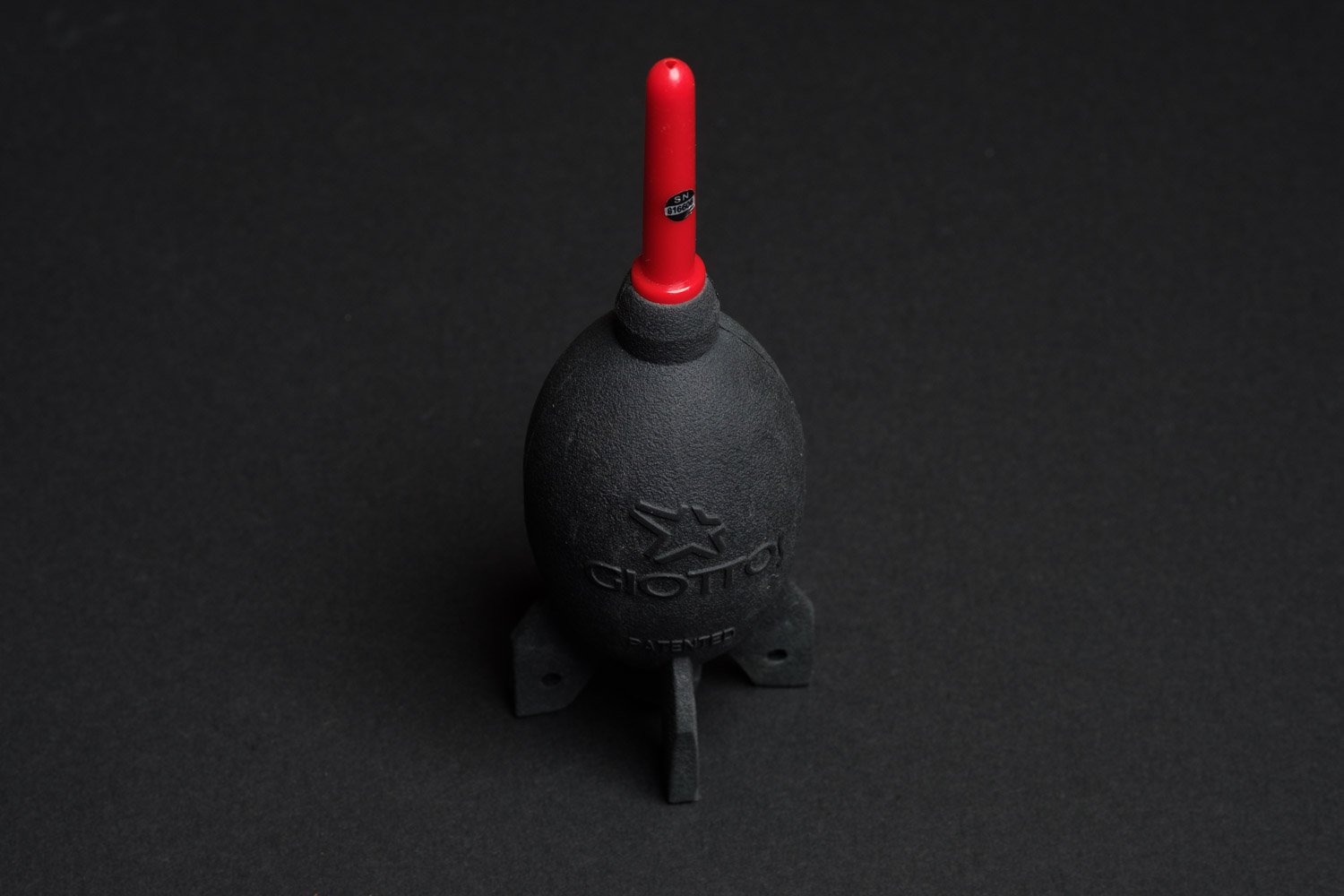
This is my most used piece of cleaning equipment. I own two so I always can keep one in my bag and one at home.
These are required to clean your sensor or shutter from dust. They are also very good at removing lint from UV filters and lens elements. It’s also very important to keep your lens caps, front and rear clean of dust, and Rocket Air blasters are the best cleaning accessory for that.
These come in a few sizes. I own the medium and large sizes. Both are just as effective but the medium size is nicer to carry in a bag.
Giotto’s Rocket Air Blaster | Available At: Amazon
Micro Fiber Cleaning Cloths
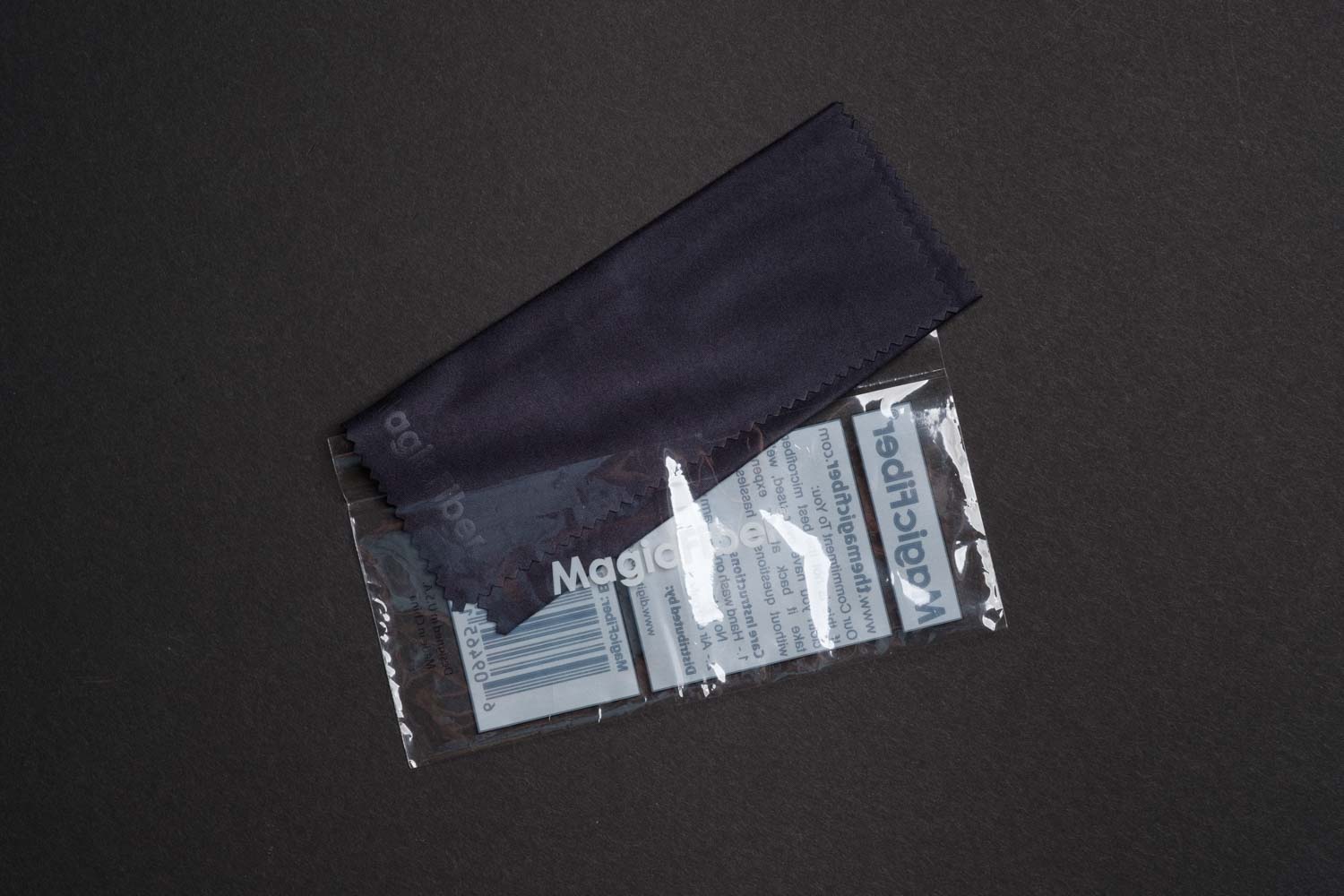
MagicFiber is my go-to brand of microfiber cleaning cloths. I buy the six packs so that I always have a fresh one ready to go whenever needed. You don’t always need a microfiber cleaning cloth and a T-shirt works fine for cleaning the camera body and rear LCD screen. However, if you’ve touched the rear element or front element of your lens and need to clean it, you really should be using a microfiber cleaning cloth to keep any more lint and grease from getting on the lens.
Microfiber cleaning cloths do get greasy over time and you eventually need to replace them.
Never use a microfiber cleaning cloth on your sensor.
MagicFiber Cleaning Cloth | Available At: Amazon
The Dust Patrol | Sensor Brush

The Canon EOS R shutter closes when the camera is not in use, but that doesn’t mean the sensor is immune to dust. If you get dust on your sensor you’ll need to clean it off. You can either use the Rocket Air Blaster which works 98% of the time or a Sensor Brush.
The reason I recommend buying and keeping a sensor brush with you at all times, is occasionally you’ll get a piece of dust that sticks to your sensor that is immune to the rocket air blaster. This happens to me a few times a year. In that situation, you’ll need the Sensor Brush.
There is some maintenance to keeping your Sensor Brush clean. Always keep it in its bag and in the tube. Before using the sensor brush, blast it a few times with the rocket air blaster. This cleans the sensor brush from any dust and gives it a static charge that helps pick up more dust. Be very careful you don’t accidentally trigger the shutter when cleaning your sensor. There is an option in the camera where the shutter will not release without a lens. You may want to set this when cleaning your sensor.
I use the D-SLR sensor brush by The Dust Patrol. Made in Germany and very high quality.
Sensor Brush | Available On: Amazon
Canon EOS R Best Accessories | Bottom Line
These are all the basic accessories for the Canon EOS R. I’ll continue to add to this list when new accessories are available. Hopefully, we’ll see some cool body cases and more body accessories soon.
I’ll also be trying out a few of the shutter remotes early next year as well as the EF to R variable ND adapters. More Canon RF lens reviews coming soon as well.
| **This website contains affiliate links. We will earn a small commission on purchases made through these links. Some of the links used in these articles will direct you to Amazon. As an Amazon Associate, I earn from qualifying purchases. |

